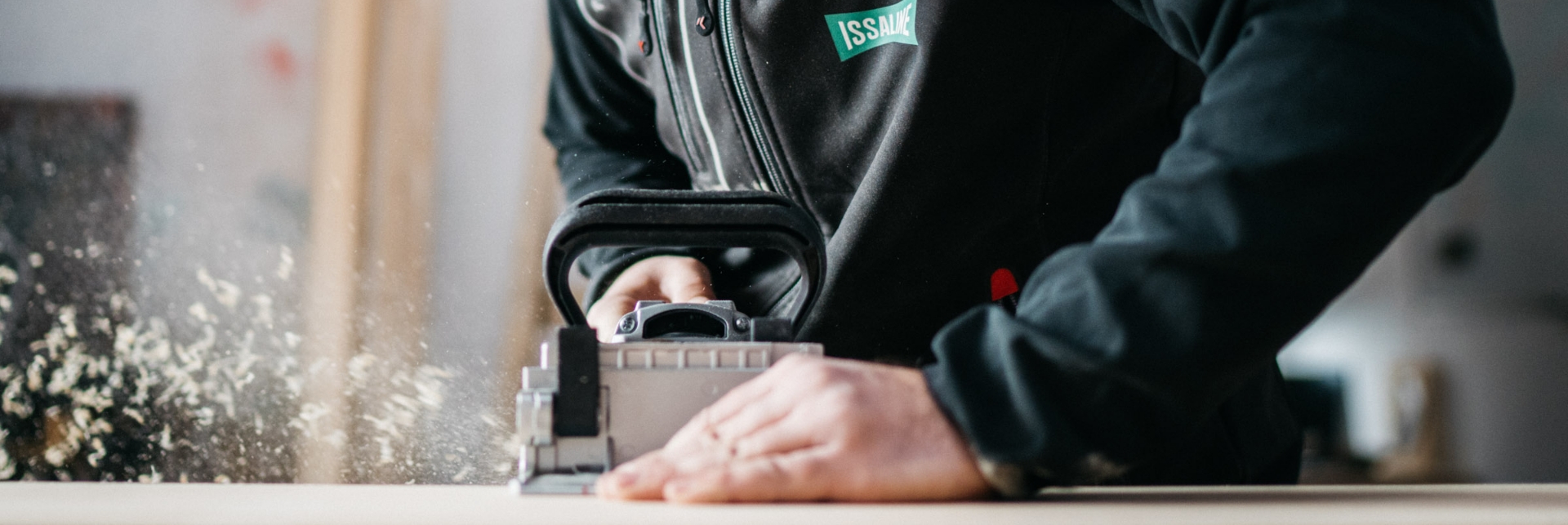Close

Carpenter
How should a carpenter equip himself?
The carpenter is the sculptor of wood. An ancestral profession that has undergone a great evolution in recent decades but that since its origin became a fundamental pillar for the construction industry. Structures, beams, cladding, furniture, decoration... endless solutions worked by the hand of a talented professional. Discover with Issaline how this virtuoso of wood should be properly equipped:
The handling of heavy material, the use of sharp materials, as well as the use of portable tools means that the footwear must comply with EN ISO 20345. Footwear that must have an anti-slip sole, impact protection toe cap and anti-puncture insole.
They must comply with the EN 388 standard, against mechanical and physical hazards caused by abrasion, blade cuts, tearing and perforation. The handling of sharp materials, splinters, nails... make this PPE an essential element in the carpenter's clothing. It must also comply with EN ISO 374-1/Type C when chemical protection is required against at least one substance: glues, silicones, mastics, etc... etc.
Another option is to use two pieces. In this case, the multi-pocket pants are ideal for handling different types of tools, and as for the upper garment, the technical T-shirt or polo shirt with a resistant and lightweight jacket would be the best combination. The breathability and resistance of these garments is also a fundamental factor.
We will differentiate between two types of protection depending on whether you are working with softwoods or hardwoods. For soft woods, a self-filtering FFP1 particulate mask complying with EN 149 must be used. When working with hard woods, the protection must be FFP3 and must comply with EN 149, since the dust from these woods is considered carcinogenic.
In addition to this equipment,
the carpenter must carry from CIRCUMSTANTIAL FORM:

EYE PROTECTION
Eye protection complying with EN 166 when using machinery and tools to prevent damage from splinters, wood chips, dust, etc. resulting from processes such as sanding or cutting.
Issaline declines any responsibility for an incorrect choice of the D.P.I. or for its incorrect use. Always ask your safety officer for precise instructions.


